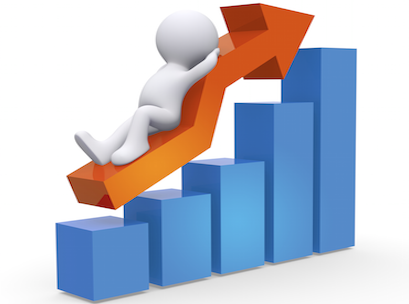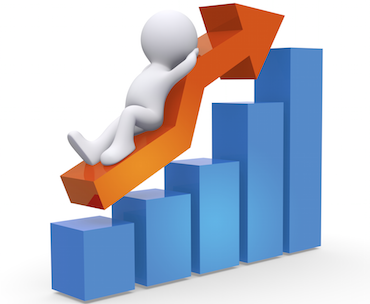Updated: 09:45 am AEST 6 October 2017
Consumers have tightened the purse strings in the calm before Christmas, with August trade figures released today by the Australian Bureau of Statistics (ABS) representing lower than expected move towards Spring with a 2.13 per cent total growth year-on-year.
Retail turnover plunged 0.6 per cent to $25.9 billion in August, missing market expectations of a rise from July of 0.3 per cent.
The drop in spending in August follows a decline of 0.2 per cent in July, the first back-to-back monthly decline in spending in six years.
The sharpest fall in retail spending in more than four years has cast doubt on the Reserve Bank’s economic forecasts, and adds weight to expectations for a long run of unchanged interest rates.
“With many historic challenges affecting the Australian industry these past few months, we have expected to see the sector suffer,” said Russell Zimmerman, executive director, Australian Retailer’s Association,
“With increased energy costs, higher tax burdens and an inflexible wage system, we need Government action to increase consumer and business confidence.”
Alongside Other Retailing, Food Retailing (2.30 per cent) and Household Goods (2.01 per cent) show moderate year-on-year growth.
The retail categories showing a significant hit to year-on-year sales growth include Cafes Restaurants & Takeaway Food (1.92 per cent), Clothing Footwear & Personal Accessories (0.89 per cent) and Department Stores (-1.35 per cent).
“These August figures have seen Takeaway Food Services receive a -0.80 per cent year-on-year growth, the first negative figures for this category in over 15 months,” Zimmerman said.
Department Stores (-1.35 per cent), Newspapers & Books (-3.87 per cent) and Hardware & Building (-0.47 per cent) also received negative year-on-year growth figures.
“July month-to-month retail trade figures saw a return to growth for Department stores, to see these figures go backwards is of high concern to the sector,” said Zimmerman.
All states recorded a drop in growth year-on year, an undesirable sign for the months ahead. Victoria (3.41 per cent) and New South Wales (2.91 per cent) showed the strongest year-on-year growth of the States. With Tasmania (1.92 per cent), the Northern Territory (1.71 per cent), the Australian Capital Territory (1.69 per cent) and South Australia (1.36 per cent) trailing behind. Both Queensland (0.37 per cent) and Western Australia (0.81 per cent) again showed the least year-on-year growth across the nation.
“As we lead into Spring racing and the beginning of the Christmas season we expect to see a pickup in both Food Retailing and Clothing, Footwear and Accessories,” Zimmerman said.
Meanwhile the National Retail Association (NRA) said the 0.6 per cent fall in August should serve as a “warning on the disastrous effects overturning the penalty rates decision may have” on the nation’s retail sector.
NRA Chief Executive Dominique Lamb said retailers were copping it from all sides, and needed the nation’s decision-makers to keep step with a rapidly-changing global environment.
“We’re seeing consistently flat results across virtually all sectors, and it’s clear that if we keep penalising retailers and preventing them from remaining competitive, these figures will only get worse,” said Dominique Lamb, NRA CEO.
“If retailers can’t afford to open their doors on a Sunday, in an environment where consumers are more price-driven than ever before, are spoiled for choice by international competitors who are not subjected to the same cost imposts our retailers are, and expect to be able to shop seven days a week, then everyone loses out.
JP Morgan economist Ben Jarman said further weakness in household consumption would put at risk the RBA’s forecasts for a return to economic growth of three per cent, from the current annual rate of 1.8 per cent.
“Today’s data underscore the risks to the RBA’s central scenario and the likelihood that rate cuts are more likely than hikes in the foreseeable future,” he said.
RBC Capital Markets economist Su-Lin Ong said it is likely that higher power bills will have also impacted retail spending in September, which could detract from the next reading of economic growth, to be released in December.
“As the key driver of domestic demand, the risk remains that the RBA’s GDP forecasts remain overly optimistic and reliant upon exports and public spending,” she said.
Meanwhile Prime Minister Malcolm Turnbull believes low wages growth means Australians aren’t reaching into their pockets at the shops.
“While we’re seeing strong growth in employment, we’re yet to see stronger growth in wages so people feel as though they’re not getting ahead,” the prime minister told Neil Mitchell on 3AW radio on Friday.
“We need to see more stronger growth in wages.”
When there was stronger economic growth, the labour market became tighter and a wage catch-up followed.
Turnbull also put lower retail spending down to higher electricity prices.
Access exclusive analysis, locked news and reports with Inside Retail Weekly. Subscribe today and get our premium print publication delivered to your door every week.







